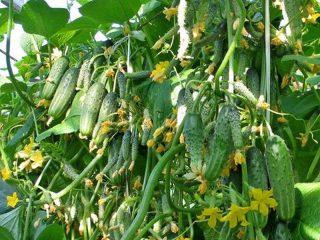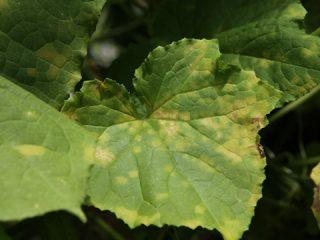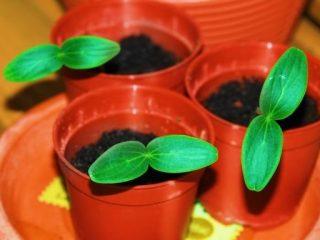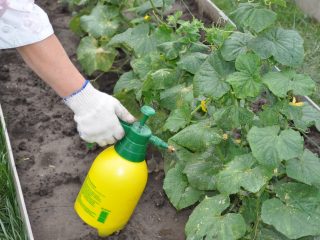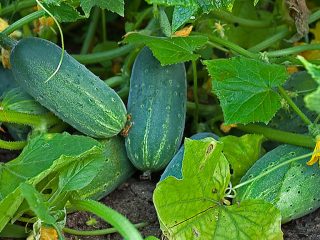Content
Many amateur gardeners are interested in how to prolong the fruiting of cucumbers in a greenhouse and get a good harvest in early autumn. Cucumbers are crops with a rather short fruiting period - their vines begin to wither in August, and by the end, and sometimes in the middle of this summer month, the setting of new fruits stops. But with the right approach to growing cucumber bushes and using special agrotechnical techniques, you can extend the harvest until September - October.
The main reasons for the drying out of the vines, which leads to a significant reduction in plant productivity, are damage to the bushes by diseases traditional for cucumbers, insufficient nutrient content in the soil, damage to the stems, and a decrease in air temperature. Eliminating these factors will allow cucumber bushes to bear fruit successfully in the fall.
Control of cucumber diseases
The most common diseases of cucumber bushes are powdery and downy mildew (foamy mildew), bacteriosis. Powdery mildew usually affects plants when the air temperature drops below 18°C and high humidity, characteristic of rainy weather. The disease manifests itself in the form of a white coating, first covering the leaves with small spots, then completely, causing yellowing and drying.
The likelihood of a bush being affected by powdery mildew increases with too intensive fertilizing with nitrogen fertilizers, irregular and insufficient watering.
Treatment of the plant should begin at the earliest stage of the disease. When spraying with solutions, ensure that the liquid gets on both sides of the leaf in order to achieve complete destruction of the pathogen.
The following measures provide effective results:
- spraying the vegetative parts of the bush with a decoction of horsetail, an infusion of marigolds with the addition of laundry soap, and mullein diluted with water;
- treatment with chemotherapy - 0.5% solution of soda ash and soap, 4% solution of copper sulfate, 1% solution of Bordeaux mixture;
- periodic (once a week) spraying with a solution of colloidal sulfur;
- stopping feeding plants with nitrogen fertilizers;
- disinfection of the greenhouse with a formaldehyde solution after harvesting;
- maintaining the air temperature inside the greenhouse at 23-25°C, using warm water for irrigation.
When affected by downy mildew, the leaves of cucumbers become covered with light yellow spots, then after a while they turn brown and dry out. The cause of the disease is infection with a fungus - the causative agent of penoporosis, the rapid reproduction of which is facilitated by high humidity and the use of cold water for irrigation.
The disease can be eliminated by stopping watering and fertilizing when the initial signs of penoporosis appear, treating with Ridomil, copper oxychloride, and Ordan. Solutions of these drugs should be warm. It is necessary to maintain the optimal temperature in the greenhouse (approximately 25°C). It is useful to spray the bushes with whey diluted with water.
These measures will also help prevent bacteriosis - corner leaf spot.
A characteristic manifestation of a bacterial disease of this species is the appearance of watery spots on the vegetative parts of the plant, gradually turning into depressions, at the bottom of which liquid accumulates.
The development of bacteriosis will be prevented by:
- regulation of humidity and temperature in the greenhouse;
- balanced fertilizing with complex mineral fertilizers;
- treating bushes with fungicides, for example, Previkur, Metaxyl or Etafol;
- careful selection of seed material - from healthy bushes, soaking in a 5% solution of table salt;
- complete removal of plant residues after harvesting, followed by burning or deep embedding into the soil;
- disinfection of soil and greenhouse surfaces.
Stimulation of fruiting of cucumbers
The fruiting period can be extended by increasing the amount of nutrients contained in the soil. For this purpose, cucumbers are added to large areas of cultivation. urea at the rate of 300 g per 1 hundred square meters, dissolving the fertilizer in irrigation water.
In a small area, you can additionally spray the bushes with an aqueous solution of urea, dissolving 15-20 g of the drug in 10 liters of warm water. Instead of mineral fertilizers for root feeding, you can use mullein diluted with water, adding 30 g for every 10 liters of solution. superphosphate.
Cucumbers also begin to bear fruit more actively with regular addition of loosening materials, which are usually peat, dried mown grass, humus or compost.
The bases of the stems covered with mulch send out additional lobe roots. This provides the stems and leaves with an increased volume of nutrition, causing the growth of new vegetative mass and rejuvenation of the plant.
When growing cucumbers on clay soils, the absorption of nutrient solutions for root hairs is more difficult, so in such conditions it is recommended to add mulching materials more often. You can also rejuvenate the bush by laying the leafless part of the stem at the base of the bush in rings and sprinkling it with fertile soil. Soon it will put out young roots that can provide the plant with the nutrition necessary for good fruiting.
Tips for caring for cucumbers
Compliance with the following plant care rules will allow you to increase the fruiting time of cucumbers:
- When harvesting, you should carefully separate the fruits from the vines, without disturbing their position or tearing them off the ground, so as not to damage the lobe roots extending from the stem.
- Cucumbers will bear fruit better if harvested regularly. The best time for this operation is midday - during this period the moisture concentration in the plant drops, the elasticity of the stems increases and the fruits are more noticeable.
- When the air temperature drops at the end of summer, the amount of root fertilizing should be reduced by 2-3 times, compensating for it with foliar fertilizers (spraying stems and leaves), since even with a slight decrease in temperature, the absorption of nutrients by the roots is significantly reduced.
- To stimulate the growth of young shoots and the formation of new ovaries, it is recommended to remove leaves in the lower part of the stem that are outside the fruiting zone.
- It is advisable to plant cucumbers in several batches. If there is not enough space, seedlings can be planted next to previously planted bushes. Seedlings grown from stepchildren will enter the fruiting stage much earlier than those obtained by germinating seeds.
Conclusion on the topic
The recommendations given will help increase the life expectancy of cucumber bushes and the amount of harvest obtained. It is necessary to monitor the air temperature in the greenhouse, and if it decreases significantly, resort to heating the greenhouse with a stove or other type of heater. At later times, it is better to plant self-pollinating varieties of cucumbers (parthenocarpic), the yield of which is much higher compared to pollinated insects.







